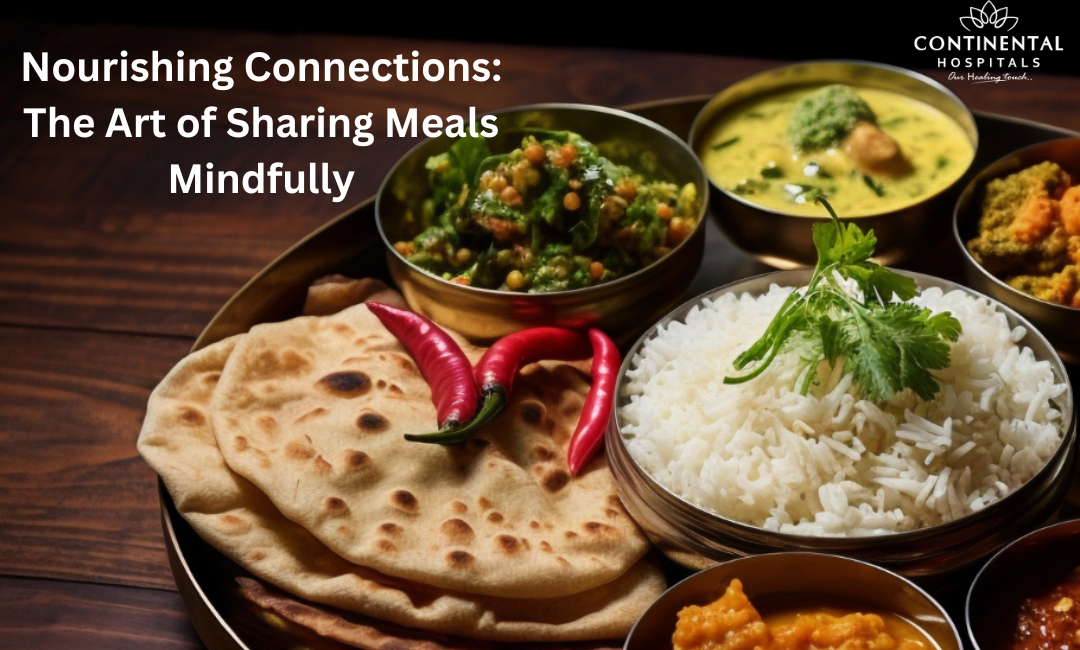In the hustle and bustle of our modern lives, amidst the constant flurry of activity and distraction, the simple act of sharing meals often gets lost in the shuffle. Yet, beneath the surface of our hurried existence lies a timeless tradition—one that transcends cultures, generations, and circumstances. It is the art of sharing meals mindfully, a practice deeply rooted in the human experience and imbued with profound significance. In the quiet moments spent around the table, we have the opportunity to nourish not only our bodies but also our spirits, forging connections that sustain us in ways both tangible and intangible.
At its core, mindful eating is about more than just the food on our plates—it's about the experience of being fully present in the moment, engaging all of our senses to savor the flavors, textures, and aromas of each bite. It's about slowing down, tuning into our bodies' hunger and fullness cues, and approaching the act of eating with curiosity, openness, and gratitude. When we eat mindfully, we are not simply fueling our bodies; we are nourishing our souls, cultivating a deeper appreciation for the abundance that surrounds us and the interconnectedness of all living beings. And when we extend this practice to the act of sharing meals with others, we create opportunities for connection, conversation, and communion—a sacred space where bonds are strengthened, memories are made, and love is expressed in its purest form.
The Importance of Mindful Eating
Mindful eating is the practice of paying attention to the present moment while consuming food, engaging all the senses to fully experience the flavors, textures, and aromas of each bite. By cultivating mindfulness during meals, we can develop a deeper appreciation for the nourishment that food provides and establish a healthier relationship with eating.
1. Cultivating Awareness:
- Mindful eating begins with cultivating awareness of our eating habits, including why, when, and what we eat. By tuning into our body's hunger and fullness cues, we can better understand our nutritional needs and make conscious choices about the foods we consume.
🥗 Healthy Plate Challenge
🍽 Add Your Favorite Dish
Pick Your 6 favorite foods, eat, and see the results.Drag & drop foods onto your plate.
Drop Food Here
2. Savoring the Moment:
- Rather than rushing through meals, take the time to savor each bite, noticing the colors, smells, and flavors of the food. By bringing mindful attention to the act of eating, we can derive greater pleasure and satisfaction from our meals.
3. Honoring the Source:
- Mindful eating also involves acknowledging the sources of our food—the farmers, producers, and laborers who make it possible for us to enjoy nourishing meals. By expressing gratitude for the abundance that surrounds us, we can develop a deeper connection to the food we eat and the earth that sustains us.
The Power of Shared Meals
Sharing meals with others is a time-honored tradition that transcends cultural boundaries and fosters a sense of belonging and community. Whether it's a family dinner, a gathering of friends, or a communal feast, the act of breaking bread together creates opportunities for connection, conversation, and camaraderie.
1. Creating Rituals:
- Establishing mealtime rituals can transform ordinary gatherings into meaningful experiences. Whether it's setting the table with care, saying grace before eating, or sharing stories and reflections, rituals help to deepen our connection to the food we eat and the people we share it with.
2. Fostering Connection:
- Sharing meals provides an opportunity to connect with others on a deeper level, strengthening bonds and fostering a sense of belonging. By engaging in conversation, active listening, and shared experiences, we can cultivate meaningful connections with family, friends, and community members.
3. Building Memories:
- Some of life's most cherished memories are made around the dinner table, where laughter is shared, stories are told, and love is expressed. By creating positive mealtime experiences, we can build lasting memories that bring joy and comfort in times of need.
Mindful Eating in Practice
Practicing mindful eating doesn't require elaborate rituals or special techniques—it simply involves bringing awareness and intention to the act of eating. Here are some practical tips for incorporating mindful eating into your daily life:
1. Slow Down:
- Take your time when eating, chewing each bite slowly and savoring the flavors. Avoid rushing through meals or eating on the go.
2. Minimize Distractions:
- Turn off electronic devices and other distractions during meals to fully focus on the experience of eating.
3. Engage the Senses:
- Notice the colors, textures, smells, and flavors of the food as you eat. Pay attention to how each bite makes you feel.
4. Practice Gratitude:
- Take a moment to express gratitude for the food on your plate and the people you are sharing it with. Reflect on the effort that went into preparing the meal and the nourishment it provides.
5. Listen to Your Body:
- Tune into your body's hunger and fullness cues, eating when you're hungry and stopping when you're satisfied. Avoid overeating or mindless snacking out of boredom or stress.
Conclusion:
In a world filled with distractions and demands, the simple act of sharing meals mindfully offers a powerful antidote to the chaos of modern life. By cultivating awareness, savoring the moment, and honoring the connections that food provides, we can nourish our bodies, enrich our relationships, and find greater joy and fulfillment in the everyday rituals of eating. So, let us gather around the table with intention and presence, embracing the nourishing connections that await us.
Related Blog Article:
1. Unveiling the Hidden Risks of Processed Food Consumption
2. Plant-Based vs. Animal-Based Nutrition
3. Green tea for weight loss: Does it work?
4. Understanding Electrolytes: Key Players in Summer Hydration
5. Healthy Habits for Weight Management
.webp)














